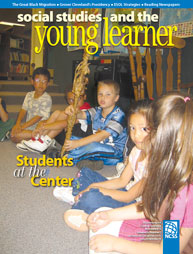- NCSS Annual Conference
- NCSS Summer Workshops
- State and Local Conferences
- NCSS Conferences and Meetings Calendar
- Notable Tradebooks
- Advertising
- Publications Archive
- Theory and Research
- Books and Bulletins
- Social Education
- Young Learner
- Middle Level Learning
- TSSP Newsletter

